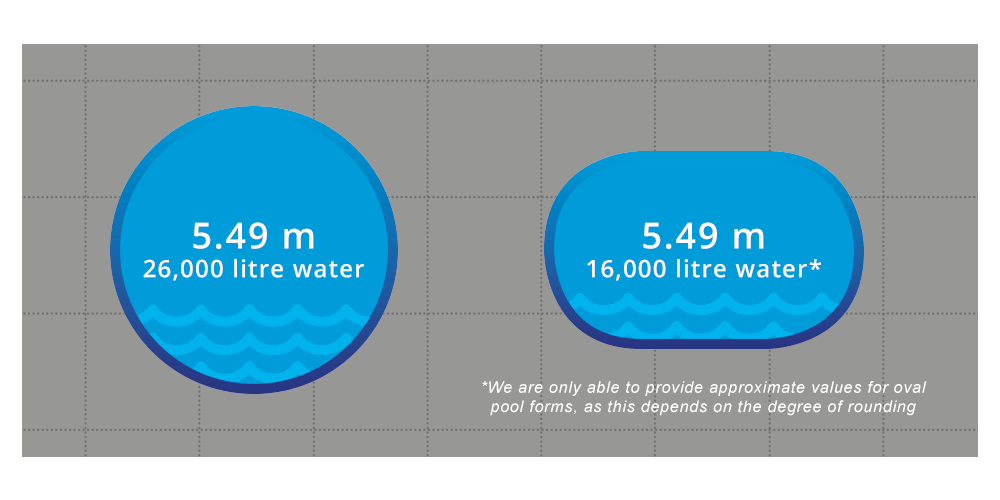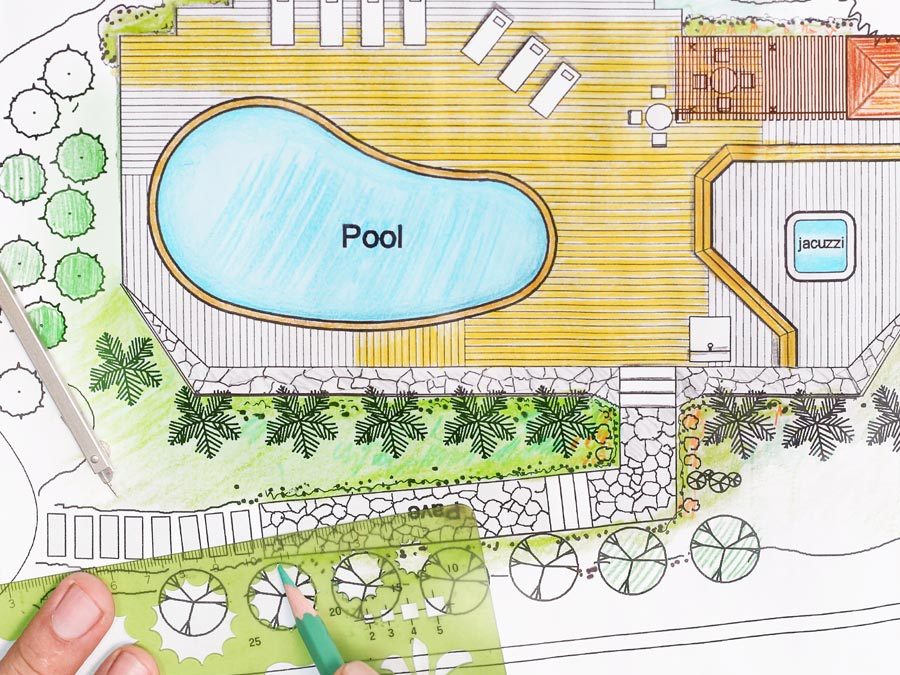1. Construction: Aboveground, submerged or built-in?

Aboveground
Partially submerged
blank
Advantages
- various construction kits available
- a safe choice
- cheap to buy
- short project time, quick to assemble
Disadvantages
- no individual form
- for physical reasons only round aboveground pools are available
- steel wall constructions with pool foil are most common (not very durable)
- dominates the overall appearance of the garden
- high ladder with folding safety guard required
- high pool sides encourage birds to perch
- awkward to clean
Built-in
blank
Advantages
- elegant optics are integrated in the garden
- relaxed seating by the pool and ability to hang feet in the water
- simple entry into the pool
- greater depths possible for more comfortable swimming
- accessibility for disabled people
- counter swim units can be used for rehabilitation purposes
- high water level with overflow possible
- shock-resistant pool wall
- can be individually illuminated
- easy to operate the pool robot
- easy to clean by hand
- extra stable safety covers can be used
- covered pool enclosure is possible
Disadvantages
- longer construction phase and removal of earth
- drainage, base plate and supporting walls are necessary
- foliage can blow into the pool more easily
- planning permission may be required
blank
Advantages
- good alternative for gardens with high groundwater levels
- individual pool design or finished mould
- durable construction
- can be better integrated into the garden optically
- uncomplicated entry for young and old
- ladders or steps (even on the corner)
- greater depths available for more comfortable swimming
- plastic pools with smooth pool walls ease cleaning
- easier to cover manually
- prevents dogs from jumping in
Disadvantages
- longer project time
- pool sides are a tripping hazard and require safety lighting at night
- drainage, base plate and supporting walls are necessary
- planning permission may be required
2. Location: Sunny or wind still?
Sunny location
Wind still location
blank
Advantages
- bathe in the sun
- pool water heats up quickly
- children don’t get cold as quickly and can therefore have more fun
Disadvantages
- excessive sun bathing can result in sunburn
blank
Advantages
- less foliage in the water
- fewer insects
- no influence on the inlet nozzles and water flow
Disadvantages
- no cool breeze on hot summer days
3. Form: Round or square?

The form of your future blue oasis is not only linked to optics and taste. If you take cost and sustainability into consideration during planning, water consumption is not an insignificant factor. The following example shows the considerable differences between each form.

Round
Square
blank
Advantages
- popular with young and old alike
- always a good choice for those who are mainly interested in cooling down
- many moulds available
The most common round pool diameters range from approx. 3 to 8 m.
Disadvantages
- appeals more for bathing and splashing
- smaller pools are not swimmer friendly
- require approx. 30 % more water than square pools for the same lap length
- comparatively high costs for construction and maintenance (higher volume for water treatment, more chlorine consumption, longer heating times)
blank
Advantages
- strong, clear form
- offers more room to swim
- allows direct connection to the terrace
- generally fits harmoniously in the garden
The most common dimensions start at 300 x 600 cm and there are virtually no limits.
Disadvantages
- classic square might be boring
Oval
8-form
blank
Advantages
- elegant compromise between round and square
- a harmonious connection between house/terrace and nature
- water saving in comparison to round and square pools
Standard dimensions: approx. 300 x 450 cm to 600 x 1200 cm and larger.
Disadvantages
- difficulties covering the pool can result in higher energy costs and more cleaning work
blank
Advantages
- individual form
- almost no corners in the form
Standard pool sizes range from approx. 300 x 450 cm to 600 x 900 cm, occasionally somewhat larger.
Disadvantages
- complicated form to build oneself
- may require more inlet nozzles in order to avoid blind spots in which dirt can settle and cause algae to grow
- problematic for some pool robots
- less choice in pool moulds
4. Volume: large or small?
Large
Small
blank
Advantages
- ideal for families with children
- ideal for partners/families with large circles of friends
- more room to frolic
- more room to move
- sufficient room to swim laps
- room for inflatable rings, cocktail islands and other utensils
- room for guests
- adds value to the property
Disadvantages
- only recommended for large gardens
- higher maintenance costs
- frequent visitors put a strain on the drinks cabinet
blank
Advantages
- subtle in appearance and adds shape to every garden
- faster to build
- cost less than larger pools
- ideal for social use
Disadvantages
- used more to cool down than to swim
5. Pool cover: costly or cost saving?
blank
For
- safety for unsupervised non-swimmers, children, pets
- less water consumption due to reduced evaporation
- less consumption of maintenance products due to reduced UV rays
- saves money and the environment
blank
Against
- extra cleaning and maintenance
- tedious in daily usage without automatic equipment
6. Options: Sporty or comfortable?
blank
Sporty
Counter swim unit:
Paddling pools are a thing of the past! With a counter swim unit you can expand even the smallest of pools and swim as many laps as you like. Not only swimming is good for your health – the counter current can also be used wonderfully for soothing back massages. It creates a lot of fun for children too. You want to build your pool yourself, but don’t want to invest in a counter swim unit just yet? There are also models available which you can hang in the pool. You can upgrade your pool at any time. The main thing is that your pool is deep enough to swim in comfortably.
blank
Comfortable
Accessibility:
Looking at the later years, which will hopefully catch up with us at some point, we recommend building a fully submerged pool. For the later years, entering the pool, especially via built in steps, is much easier than climbing a ladder. Apart from that it is also much easier to upgrade fully submerged pools with swivel seats and entry aids so that people with a handicap can use the pool for water therapy.
